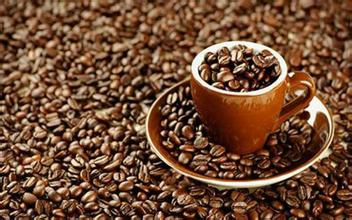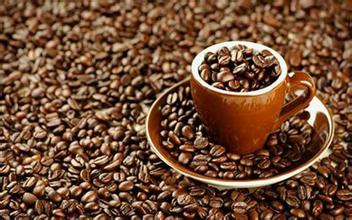The difference between ice drop (ice brewed) coffee and hot coffee with ice-coffee worm
Iced coffee is fundamentally different from iced coffee.
Iced drop (or iced brew) coffee and iced or iced coffee may seem like a word difference, but the two are essentially different when extracted and must not be confused.
Ice drop (also known as ice brew) coffee refers to coffee drinks extracted by long-term low-temperature immersion in water below 5 degrees Celsius.
Iced coffee or iced coffee refers to cold coffee that is quickly extracted with hot water and then added with ice or cooled rapidly.
There is a big difference between the two in terms of extraction method and time:
1. Hot coffee is hot water higher than 80 degrees Celsius or above 85 degrees Celsius; Second, it must be extracted quickly, because too slow will make coffee extraction excessive cause miscellaneous taste, and the main substance causing miscellaneous taste is tannin, boiled tannin will decompose into Jiao Wu acid, and tannin is easy to dissolve and decompose in hot water, it is the main culprit causing our coffee to be too bitter, we generally have to be careful to avoid excessive extraction of tannin and caffeine substances, this is our coffee lovers for a longer time know the basic common sense;
2, ice drop coffee is to use must be lower than 5 degrees or even close to the freezing temperature of coffee extraction, so that the various components contained in coffee in ice water is not easy to extract, so we must take a fine grinding slow extraction method, the specific method is to let coffee powder soaked in ice water for a long time, with a very slow drip speed extraction, the general standard speed is 1 drop per second, 45-50 drops per minute, generally takes 8-12 hours. Although it takes a long time to wait, its biggest advantage is that our most hated tannin will not decompose almost completely in cold water, caffeine will decompose in ice water, but it is reduced by about 90% compared with hot water extraction, while the other main components of coffee are the same. Because there is no astringency in the iced coffee, although there is a bitter taste but very little, so the iced coffee in the taste is particularly pure, this is also a long wait compensation.
By comparing the two analyses, you can see that the fundamental difference between hot coffee and iced coffee lies in the difference in extraction temperature and the amount of substances contained in the coffee, not in the final cold or hot drink. Hot coffee can of course be cooled with ice, while iced (or iced) coffee can also be warmed and hot (experts recommend heating it over water to avoid direct heating).
This is also why you want to order a real Dutch iced coffee in a coffee shop or hotel, not only need to book at least one day in advance, but also its price will be much higher than the general hot coffee reason, is the so-called "who knows the liquid in the cup, drops are hard", this is also worth our more light a little silver pay.
How to distinguish iced coffee from iced coffee
Because of this, I often find that there are some bad coffee shops or hotel baristas who add hot coffee to ice to cool down and pretend to be authentic iced coffee to deceive consumers to earn high profits.
In fact, the differences between them are easy to distinguish, there are two ways:
One is that real iced coffee, after at least dozens of hours of full filtration and fermentation, will immediately have an indescribable strange aroma after opening the bottle, which is the kind of aroma that hot coffee absolutely does not have, and this aroma cannot be replicated by any other method, unforgettable. So when you doubt whether it's real iced coffee, ask the barista to bring up the original iced coffee without sugar and milk for a sniff.
Second, taste and feeling, ice drop coffee does not have any astringent taste, caffeine content is very small, drink up the taste is very clean and refreshing, even drink a few cups will not have any palpitations or insomnia and other negative effects. After adding ice to hot coffee, it only reduces the temperature, but caffeine and tannin are not reduced, and there will be a big difference between the taste and the feeling after drinking.
The origin of iced coffee
Java Island, Indonesia, was colonized by the Netherlands in the 17th century. It is said that the coffee extraction method used here was introduced by Dutch merchants, so it was named Dutch Coffee. This type of coffee drips with ice water for a long time, so it is also called "cold brew coffee cold" or "water drip coffee".
Iced coffee is coffee that has been dripped with ice water for 8-12 hours at room temperature. Although the aroma is not strong, it will emit a unique aroma, which cannot be obtained when extracted with hot water. The biggest advantage of this coffee is that it is quite pure and has no extra impurities, but it can give full play to all the ingredients contained in the coffee.
There are two ways to extract iced coffee. One is the traditional method still used in many parts of Indonesia today-dripping coffee in a lead bucket; the other is the method of dripping coffee using an all-in-one machine (the ice drip pot we often see in coffee shops consists of a glass top pot with a drip switch, a glass pot with coffee powder connected to a glass serpentine pipe, and finally dripping into a glass flask). Ice-drop coffee appliances that use the drip principle are reminiscent of laboratory tools. They function well and look quite spectacular. These alone can stimulate my curiosity. Ice drops are made with a variety of tools, and the price is quite high, mainly made and sold by Japanese merchants.
From this point of view,"cold brew coffee cold" or "water drip coffee" refers to the same meaning, and there is no essential difference, just different terms and names of the same thing.
If we are talking about differences, I think the term "ice brew" covers a wider scope. It can refer to ice drops or cold bubbles.
Toddy coldbrewers are the easiest way to make iced coffee
The method of extraction by immersion in ice water is another way of making iced coffee in Java and other parts of Indonesia, known as the traditional cold brew. It does not require any technique or machinery and is the most natural way to extract coffee.
Todd Simpson, on a business trip to Guatemala in 1962, ordered coffee at a restaurant. However, the only thing in front of him was the black extraction liquid in the pot and the hot water that had just boiled. The clerk poured the hot water into the black liquid and handed it to him. He couldn't forget the creamy, rich taste of coffee he had drunk, and when he got home he studied it deeply. In fact, the coffee he drank was made by a method commonly used by Dutch settlers in Java in the 19th century. He named his invention Toddy. In Seattle Gourmet Coffee and Jean Coffee Beans, cold brew coffee extract used for iced coffee is also a fan of Toddy.
Ice drop and cold bubble the same point is to soak coffee powder in ice water and extract coffee liquid, two production methods have their own characteristics, ice drop method tool gorgeous spectacular, pure and natural taste; cold bubble method tool simple, rich and smooth taste, especially suitable for home and office.

Important Notice :
前街咖啡 FrontStreet Coffee has moved to new addredd:
FrontStreet Coffee Address: 315,Donghua East Road,GuangZhou
Tel:020 38364473
- Prev

Ice drop coffee-a touch of cool ice drop coffee in summer-a touch of clarity in summer
The principle of ice-brewed coffee is that the coffee itself is compatible with water and is extracted bit by bit by melting ice. The coffee extracted has different flavor according to the roasting degree, water quantity, water temperature, droplet speed, grinding thickness and other factors. The coffee powder of the characteristic editor is 100% soaked at low temperature and moist, and the extracted coffee is delicious, smooth and rich.
- Next

Ice drop Coffee-Special ice drop coffee production
1 special ice drop coffee beans, grind them with a 2-3 scale grinder. 2 put the filter screen into the bottom of the extraction bottle. Pour the coffee powder into the extraction bottle and flatten the coffee powder. 4 place the extraction bottle on top of the collection bottle, and then place the drip plate on top of the extraction bottle. 5 prepare ice cubes and filtered pure water and pour into the water storage ball at the ratio of 1:1. 6 turn on the control switch to evenly drench the surface of coffee powder
Related
- Does Rose Summer choose Blue, Green or Red? Detailed explanation of Rose Summer Coffee plots and Classification in Panamanian Jade Manor
- What is the difference between the origin, producing area, processing plant, cooperative and manor of coffee beans?
- How fine does the espresso powder fit? how to grind the espresso?
- Sca coffee roasting degree color card coffee roasting degree 8 roasting color values what do you mean?
- The practice of lattes: how to make lattes at home
- Introduction to Indonesian Fine Coffee beans-- Java Coffee producing area of Indonesian Arabica Coffee
- How much will the flavor of light and medium roasted rose summer be expressed? What baking level is rose summer suitable for?
- Introduction to the characteristics of washing, sun-drying or wet-planing coffee commonly used in Mantenin, Indonesia
- Price characteristics of Arabica Coffee Bean Starbucks introduction to Manning Coffee Bean Taste producing area Variety Manor
- What is the authentic Yega flavor? What are the flavor characteristics of the really excellent Yejasuffi coffee beans?

